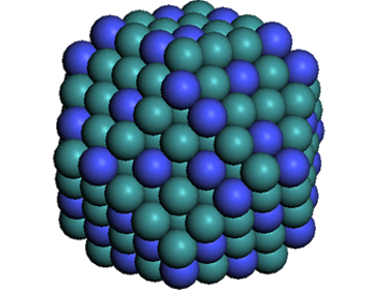Surface composition and core compositions of bimetallic nanoparticles (bi-MNPs) have become the subject of intense research in both industrial and academic settings. Catalysis is just one of the areas in which an understanding of the surface composition of bi-MNPs is crucial. Accurately determining the surface and core composition of bi-MNPs is essential in assessing their catalytic potential. However, despite its importance there was no applicable methodology available to determine the surface and core composition of bi-MNPs.
Bing Joe Hwang and colleagues, National Taiwan University of Science and Technology, Taipei, Taiwan, have developed a simple and general methodology based on Extended X-ray Absorption Fine Structure (EXAFS) techniques to quantitatively determine the surface and core compositions of bi-MNPs by combining modeling and experimental approaches.
By bringing together information from different X-ray absorption spectroscopic techniques about the oxidation states of atoms, local atomic structure, and surface properties, the group was able to extract key structural parameters for bimetallic nanoclusters, which made it possible to determine the surface and core compositions. This technique was used to study the surface composition of PtRu catalysts for CO and methanol oxidation.
The team expects the methodology can be not only used to characterize the surface and core compositions of various bi-MNPs under reaction conditions even in the liquid phase, but can also be easily extended to other systems with diverse structures and shapes. They see their work opening a new avenue in understanding the effects of surface and core compositions on the physical and chemical properties of nanoparticles.
- Unravelling surface composition of bimetallic nanoparticles,
Ching-Hsiang Chen, Chun-Jern Pan, Wei-Nien Su, Loka Subramanyam Sarma, Cun Cun Al Andra, Hwo-Shuenn Sheu, Din-Goa Liu, Jyh-Fu Lee, Bing-Joe Hwang,
ChemNanoMat 2015.
DOI: 10.1002/cnma.201500190

